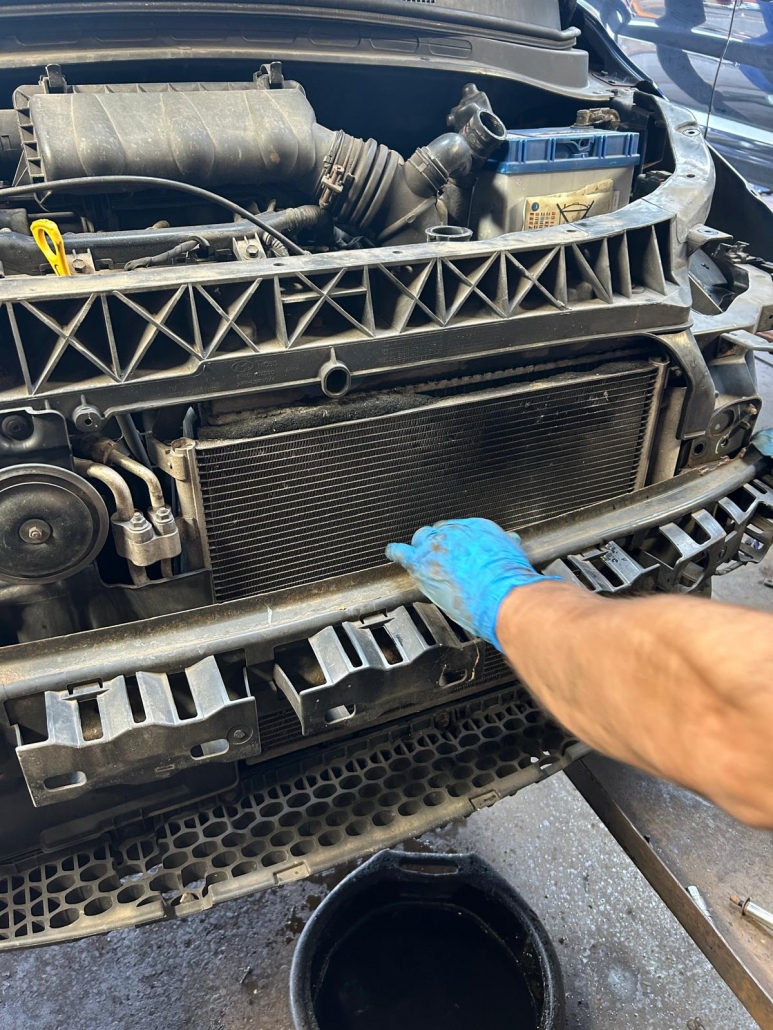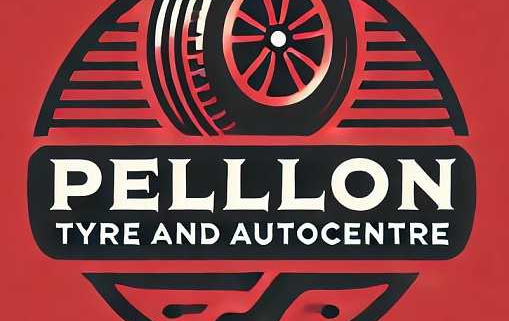Hyundai i10 with Radiator leak
Table of Contents
Hyundai i10 with Radiator leak

Hyundai i10 with Radiator leak
Why Car Radiators Fail – And a Bit About the Hyundai i10
The other day in the workshop, we had a Hyundai i10 roll in with a poor radiator. It wasn’t just a little dribble either – it was leaking like a teapot with a hole in the bottom. The old radiator had reached its end, and, as is often the case, the only option was to replace it with a new one.
Radiators are among the unsung heroes of the engine. They just sit there quietly doing their job, keeping the engine comfortable and cool while you’re bombing up the M62 or crawling through traffic in Halifax town centre. But when they fail, you soon know about it – steam out the bonnet, engine temperature needle climbing quicker than a pint disappearing in a Dewsbury pub, and before you know it, you’re stuck at the side of the road, ringing the AA.
So, what actually makes radiators pack in?

Common Causes of Radiator Failure
1. Corrosion
Radiators are full of coolant and metal. Metal plus liquid usually equals rust if you don’t keep things topped up properly. The inside of the radiator can corrode over time, particularly if the coolant hasn’t been changed in a long time. That corrosion weakens the metal, and before long, you’ve got a leak.
2. Physical Damage
Radiators sit right at the front of the car, which makes them prime targets for stones, grit, and the occasional pheasant if you’re unlucky. Even a little stone chip can start a crack or a pinhole leak.
3. Poor maintenance.
A radiator relies on a steady flow of coolant. If the coolant level drops too often, or if someone keeps topping it up with plain tap water instead of the proper mix, it can cause all sorts of trouble – from overheating to freezing in winter. (Yes, we still see cars with plain water in the system. It’s true!
4. Old Age
Like anything else on a motor, radiators don’t last forever. The seals can perish, the metal can weaken, and after years of heat cycles, they just decide enough is enough.
5. Faulty Thermostat or Water Pump
Sometimes, it’s not the radiator’s fault at all. If the thermostat sticks or the water pump fails, the radiator ends up with boiling hot coolant under pressure it just can’t cope with. Eventually, a leak will occur.

Signs Your Radiator’s on the Way Out: Hyundai i10 with Radiator leak
There is a pool of coolant beneath the car, typically consisting of green, red, or blue liquid, which should not be mistaken for rainwater dripping from the air conditioner.
The engine may be overheating, or the temperature gauge may be gradually increasing.
The engine is emitting steam.
The car’s sweet smell indicates coolant leakage, which is not a good sign.
If you spot any of these, it’s best not to ignore it. A radiator is cheaper than a new engine, and we’ve seen a few customers learn that the hard way.
The Hyundai i10—a little gem Hyundai i10 with Radiator leak
Now, about that i10 we fixed. The Hyundai i10 has been knocking about in the UK since 2008, replacing the older Hyundai Atos. It was Hyundai’s answer to the city car market – small, nippy, and cheap to run, perfect for nipping down to Morrisons or tackling those tight little parking spaces in Halifax town centre.
The i10 has always had a favourable reputation as a no-nonsense motor. A proper Yorkshire brew is not flashy, but it is reliable and great value, doing the job without any fuss.
In fact, it’s been one of Hyundai’s best sellers in the UK. The first generation was built in India and shipped over here, and it quickly became a favourite with new drivers and older folk who just wanted something straightforward and dependable. The later versions have got posher with more tech, but the original charm is still there.
Plenty of i10s are still on the road today, which just shows how tough they are – though, like the one we had in the workshop, even the best little cars need a new radiator from time to time.
Final Word Hyundai i10 with Radiator leak
So, if your car starts overheating, don’t just turn the radio up and hope for the best. The radiator is one of the most important parts of keeping your engine alive. Look after it with proper coolant, regular servicing, and a bit of TLC, and it’ll look after you.
And if it does spring a leak, well, that’s where we come in at Pellon Tyres & Autocentre. We’ll get you sorted and back on the road before you can say “Hyundai i10 with a hole in its radiator!”


